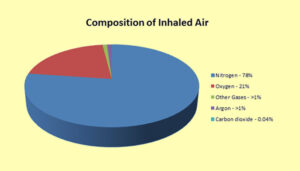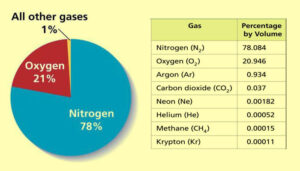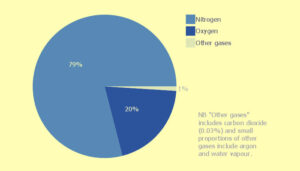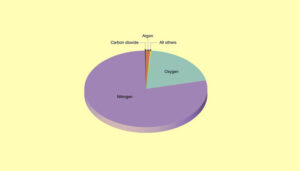In this article, we delve into the intriguing question: What is the exact krypton percentage in atmosphere of the Earth? The atmosphere surrounding our planet is a complex mix of gases, each playing a crucial role in maintaining the delicate balance that supports life on Earth. Among these gases, krypton, a noble gas, often takes a backseat in discussions about atmospheric composition.
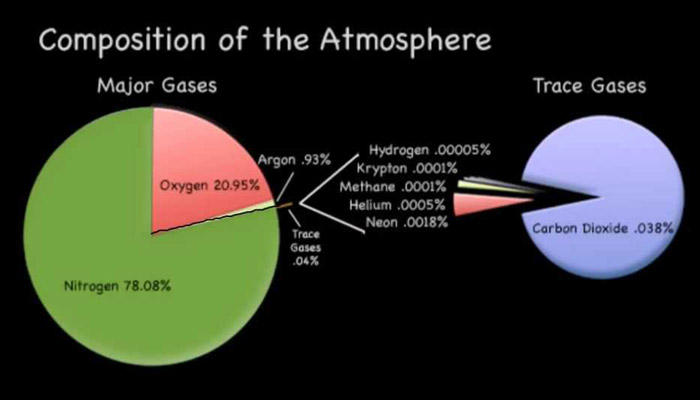
Krypton, denoted by the symbol Kr on the periodic table, is a colorless, odorless, and tasteless noble gas. It is a part of the rare gases that also include helium, neon, argon, xenon, and radon. Despite its relatively low abundance, krypton plays a unique role in the atmospheric tapestry.
The composition of Earth’s atmosphere is a critical factor in maintaining the conditions conducive to life. While nitrogen and oxygen dominate the atmosphere, trace gases like krypton contribute to its overall stability. Understanding the presence of krypton and its percentage is vital for various environmental and scientific reasons.
Table of Contents
0.000114 is the Krypton Percentage in Atmosphere
Nitrogen and oxygen collectively make up approximately 99% of the Earth’s atmosphere. These gases are fundamental to supporting life, facilitating combustion, and regulating temperature. Apart from nitrogen and oxygen, the atmosphere contains trace gases in smaller concentrations. These gases, including krypton, might be present in minute quantities but have significant implications for atmospheric processes.
The percentage of krypton in Earth’s atmosphere is exceptionally low, hovering around 1 part per million (ppm). This minuscule presence, though small, contributes to the overall chemical makeup of the atmosphere.
Krypton enters the atmosphere through natural processes such as radioactive decay of uranium and thorium in the Earth’s crust. It is also released during volcanic activity. Human activities, including certain industrial processes and the burning of fossil fuels, release krypton into the atmosphere. While these contributions are minor compared to natural sources, they have measurable effects on krypton levels.
The Role of Krypton in the Atmosphere
Krypton, being a noble gas, is characterized by its inert nature. It does not readily undergo chemical reactions, making it stable in the atmosphere.
Krypton’s inert nature means that it doesn’t participate in the chemical reactions that drive many atmospheric processes. However, its presence influences the overall thermal balance of the atmosphere. While krypton itself may not directly contribute to climate change, its interaction with other atmospheric components can have indirect effects on climate patterns and weather conditions.
Measurement Techniques
Advanced analytical techniques, such as mass spectrometry, are employed to measure krypton levels in the atmosphere. Continuous monitoring allows scientists to track changes over time. Ongoing technological developments in atmospheric analysis provide more accurate and real-time data on krypton concentrations, aiding our understanding of its behavior in the atmosphere.
Variations in Krypton Levels
Krypton levels can vary across different geographic regions due to variations in geological and atmospheric conditions. Seasonal changes and other temporal factors also influence krypton levels, adding complexity to the understanding of its distribution.
Krypton and Greenhouse Gas Effects
Krypton, like other noble gases, has a minimal impact on the greenhouse effect. Its low reactivity means it doesn’t trap heat in the same way as gases like carbon dioxide. Comparing krypton’s greenhouse effect to other gases provides insights into its relatively minor role in influencing global warming.
While krypton’s direct impact on ecosystems is limited, the overall health of the atmosphere, influenced in part by krypton levels, indirectly affects biodiversity. The low concentrations of krypton in the atmosphere pose no direct health risks to humans. However, understanding its presence is crucial for comprehensive air quality assessments.
Conclusion
Krypton, despite its low abundance, plays a subtle yet significant role in Earth’s atmosphere. Its percentage, though minimal, contributes to the intricate balance that sustains life on our planet. As technology advances and our understanding of atmospheric processes deepens, ongoing research on krypton and other trace gases becomes crucial for informed environmental stewardship.
